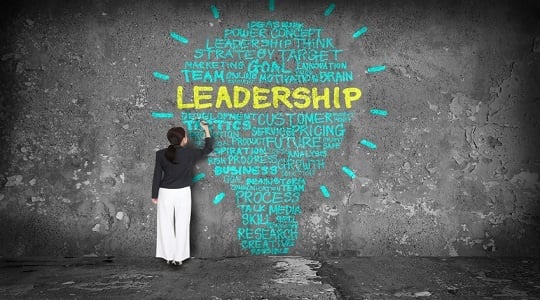Develop Socially Intelligent Leaders with BI
You can use emotional and social intelligence to improve your organization's and your own personal performance, but add business intelligence (BI) to identify and nurture leaders and develop the strugglers.
The department coffee machine is taking bets on who’s going to leave first since the team’s top performer was promoted to head of the division. Within a few months, Jake isn’t cutting it. His direct reports are squawking, productivity is down and project timelines are off.
Since psychologist and author Daniel Goleman outlined the science and research behind Emotional Intelligence (EI) and Social Intelligence (SI), HR-savvy organizations are recruiting and grooming top talent to gain the improved organizational performance that comes with EI and SI-infused leaders.
With the right HR tools and a layer of business intelligence to analyze that data, leaders can emerge from unlikely places. And trends in top and bottom performers can be identified.
Research shows that successful leaders have both the “self awareness and self mastery” of EI and the SI to read others and interact with them to produce productive outcomes.
For example, an EI-SI-capable leader:
- has self-confidence
- has self-control
- reads others emotional states
- generates a positive mood around them
- makes employees laugh
- uses intuition from vast experience
- is calm under pressure
- is motivated to improve performance.
So how good are you at reading people?
In an interview with Harvard Business Review, Goleman talks about how to tap into the EI-SI success culture but warns that organizations only win when:
- the work culture values developing staff
- poor performers are motivated to change behaviour.
How BI helps
Consistent EI-SI leaders are rare but companies that combine HR data with BI have better insight into people potential, how to develop it, and how to protect that investment.
Putting a BI front end onto Human Resources, Sales and Payroll databases gives you an evidence-based snapshot of who’s making money, who’s costing you and a list of problem performers who may need a hand in the EI or SI department.
Performance monitoring
Monitor sales professionals’ activities and compare salaries with revenue per head to target top performers who might be worth grooming for territory leadership positions. Or review project professionals’ timelines, salaries and department attrition to spot high performers with good team dynamics.
Set KPI motivators
Combine HR and sales data to analyze skills sets, performance targets, revenue contribution, employee longevity and more to set KPIs and design compensation packages that boost motivation and business performance.
Risk analysis
Ask questions of your employee turnover data (length of employment, high performers, reason-for-leaving etc) to profile the conditions high performers need to stay. Identify those at risk of disappearing and intervene.
Measure training investment
Compare the time and cost of grooming employees through training programs with productivity metrics or sales performance to measure the value of your HR investment.
Recruitment methods
Analyze and compare recruitment methods (internal referrals, agencies, job boards, career expos) to work out the time and money it takes to recruit top talent, and which methods deliver the better performing candidates.
And that’s just for starters.


Katrina is a professional writer with a decade of experience in business and tech. She explains how data can work for business people and finance teams without all the tech jargon.
Related blog posts

How can you maximize the business benefits from your enterprise resource planning (ERP) system? You get there by rethinking ERP reporting as a layered reporting system that turns ERP data into real-time insights, not just historical outputs. For years, enterprise resource planning platforms have been the backbone of manufacturing, distribution and retail because they capture orders, inventory, invoices and financial data in one place. Yet the price and effort of implementing ERP software has often led business people to question whether the company is getting the value they expected. It depends on how well people can access, analyze and act on the information inside the ERP system and related data sources.
Read more
For many businesses using an Oracle NetSuite ERP, financial and operational reporting often starts at a high level - total revenue, cost of goods sold (COGS) and operating expenses. But relying solely on this aggregated view is like trying to drive with a foggy windscreen. Without the ability to drill into specific transactions, blend financial and operational data, and visualize the root causes of performance trends, businesses are flying blind.
Read more
Phocas leads the charge towards a more equitable and sustainable future during its first year as a B Corp, setting the bar high for tech companies globally.
Read moreBrowse by category

Find out how our platform gives you the visibility you need to get more done.
Get your demo today